When we think of the environment in the context of its sustainability in regards to the modern lifestyle, we have to look optimistically into our future. Yes, we, as in humankind, pose the biggest threat to the environment currently, but if we only look at it from a pessimistic point of view, we might as well just give up, curl up under our blankets and wait for Doomsday’s Clock to strike 00:00.
However, if we look at the innovations implemented through the help of technology that wasn’t available in the past, to the global movement led by environmentalists to try to impact change, and to the ability of each individual to make a difference, we can see that our planet still has a chance. I’m not trying to be overly optimistic but we have to figure out a way to save the planet, and optimism coupled with action is the only way to go. Do mix that optimism with realism, however, to see the bigger picture and understand the need for responsibility in the face of each aspect of modern life. We have to take ownership of our blame and we have to do a lot better. The good news is that we, as the smartest species on earth, can still stop and even reverse Doomsday’s Clock. The bad news is – we have to act now.
Article Summary:
- The Impact of Modern Life on the Environment
- Is there More to Modern Living than Environmental Destruction?
- Where did we go wrong?
- What’s Happening to The Environment?
- Shift the Focus and Take Action
- What can We as Individuals Do?
The Impact of Modern Life on the Environment
When you think about a normal day in your life, with all its comings and goings, with our busy schedules and the comfort that comes with living in this day and age, most of us don’t think about how everything we do impacts the environment. Our modern lifestyle leaves us with little downtime to think about how our actions impact the environment. We work, we sleep and we try to enjoy the downtime that we have as best we can, and, unfortunately, we don’t think of the environment until a huge storm hits the East Coast or wildfire rages chaos on the West Coast.
It’s how things evolved. While technology gives us more time to better ourselves, we don’t spend that time with the environment in mind. We are all so caught up in our modern lifestyle that we have little time to think about the environment. We use more of the earth’s resources than we did 50 years ago, and this isn’t based on humankind as a whole, but on how much each individual uses and, sadly, wastes.
Statistics and Data
Take cars, for example. In 1980 around 64% of workers drove alone to work. In 2000 that percentage rose to 76. To make matters worse, the population size of each country doesn’t result in a higher car usage as in India and China there are 9, respectively 12 cars for every 1,000 residents. That number reaches 779 in America.
When it comes to water usage, we, sadly, are again, more at fault than other countries. When compared to other developed countries, US citizens use 75% more water per capita. When we compare the American way of life to that of other developed or developing countries we see that while every American in 2000 consumed on average 444 thousand gallons of water, citizens of other developed countries used 253 thousand, and people from developing countries used 144 thousand.
Regarding trash, as in the waste resulting from our modern lifestyle, in 1960 when there were around 186 million Americans, we generated 88 million tons of trash. By 2005, when there were 295 million Americans, while the population doubled since 1960, we generated 246 million tons of trash, which is more than double the amount from 1960. The silver lining of these numbers is that while the amount of trash generated grew at a higher rate than the population numbers, if in 1960 only 5.6 million tons of trash were recycled, by 2005 that number grew to 79 million.
Steps to Implement and Balance the Use of Resources
This tells us that while modernization did increase our comfort, this came at the environment’s detriment, but we are learning. However, we should learn at a faster pace. We should own up that while we do want to recharge our phones every day and get to work as soon and as comfortably as possible, we should implement alternative options to try to sustain as much of the planet’s resources as possible.
The modern lifestyle we developed allows us to buy more things than we actually need, use more power than we have to, and waste more resources than we require. However, we should learn that if we don’t need to use our phones, then we shouldn’t; if we don’t need to buy a new pair of jeans, then we shouldn’t and if we don’t need the extra glass of water, then we shouldn’t order it. Our planet’s resources are finite and we have to acknowledge the fact that we depend on them for life, and we don’t have to waste them because they won’t be available for much longer.
Is there More to Modern Living than Environmental Destruction?
YES … in all caps because we shouldn’t dig our own holes and go hide in the ground like an ostrich because that won’t help anyone and certainly not the planet. Modern living gives us access to literally everything. Now I won’t try to find solutions for all the world’s problems because I don’t consider myself that knowledgeable, but I can point out some things that we could all do to try to impact a change.
It might sound weird but try to find time to consider sustainability and the environment as part of your modern lifestyle. Looking only at what modern living is we see no concern for the environment in our daily lives. This isn’t a pessimistic view, it’s a realistic one. Few people from the general public consider buying a tube of toothpaste that doesn’t come in a cardboard box and even fewer think of the impact fast fashion has on the environment or the working conditions in some of the factories. Each individual is not solely responsible for the faith of the environment and the planet, but as a collective, we are all at fault. However, as a collective, we can implement change.
One example of this can be Iceland where, because people stopped buying toothpaste that came in cardboard boxes, the country prohibited their commercialization. Now, cardboard toothpaste won’t save the environment but this is a great example of what humankind can do once they collectively set their mind on something. Imagine doing that for every aspect of our modern lifestyle that pollutes the environment. There are many countries that are fighting against pollution, but the US shouldn’t only implement restrictive pollution regulations in the country while externalizing production to third world countries where there are no regulations against river pollution or other sustainability issues. These regulations should be respected, adhered to, and implemented across the globe.
Modern Life Transportation
The American’s dependence on cars has been ingrained into every facet of our lives as Americans.
Did you know that while the number of people per U.S. household on average dropped from 1969 to 2017 from 3.2 to 2.5, the number of vehicles per household grew from 1.2 to 1.8?
The sprawl of our communities makes it so that human-powered transport (bicycles, walking, running) is not an option because the distances we have to travel are so long. Most cities in the US do not have the infrastructure available for reliable public transportation but there are some examples that can be followed. We can not commute to work by bus or metro so we have to rely on our cars. However, one way to reduce the amount of fossil fuels used by our cars is to carpool, use public transportation or go for a bike ride when time is not a pressing matter. The last one is also a great way to maintain a healthy lifestyle.
Modern Life Consumption
Going back to the amount of trash we generate, there are simple ways to implement change. Simply stop buying what you don’t need. But of course, things aren’t as simple as that. When it comes to the way we consume our planet’s resources, if every country would consume at the same level as the US we would need four or five other planets to sustain life on earth. There has to come a moment when we stop, think and change our way of life because we are, quite literally, destroying our planet’s life support system. Try to implement the sustainability mantra: Reuse, Reduce, Recycle, into everything you do. From reinventing your kitchen cabinets to acknowledging the environmental threats of the real estate industry along with any other industry, any step in the right direction can start a change in any field.
Where did we go wrong?
When we look at every other species of mammals on our planet, they instinctively develop an equilibrium with their environment. As the Lion King states “the circle of life”. Humankind doesn’t. We simply use the natural resources of the environment and when those resources are depleted, we move to another area. There are already scientists that are trying to discover another planet that we could, at one point, inhabit because Earth is almost completely drained of all resources. Instead of investing in plans to regenerate this planet, we are already thinking of doing the same to another. This is not a sustainable way of life and we shouldn’t be trying to find a new home, but focus on the one we have.
Overpopulation is the leading cause of mass extinction and biodiversity loss because we take up more and more space, leaving less and less for any other living organism on the planet. Deforestation destroys habitats, overfishing has the same effect, and sooner or later we will wind up with a planet that is only inhabited by us. We will not be able to live on such a planet and we need to change things now.
Our Role vs. Our Modern Lifestyle
In trying to find the answer to the question in the beginning of this article, you can not help but wind up with a loss of empathy for humankind. While humans are the natural result of evolution as science states, I can not help but wonder if at one point this evolution transformed into involution. Religious beliefs tell us that God created us to be caretakers of the world he created, but at a certain point, we have failed our designed purpose. Evolution is about balance while religion is about caring but we disregard balance and care for our own individual wants and goals.
Life in the 21 century, or life as we know it, is what we can call modern living. Driving cars to go places, being connected to the world 24/7 through the comfort of our phones, buying food from the grocery store, and calling our doctor whenever we have a sore throat.
The modern lifestyle is fast-paced, task-driven, and revolutionized through technologies for our utmost convenience. We live in homes that provide for all our necessities and work in order to be able to afford everything that we could possibly need.
A human’s life is limited to its immediate surroundings and its perception of those surroundings. Through the internet, however, we can connect to virtually any place on the planet and receive information concerning every subject available online. And yet, we use the ultimate power provided by our modern lifestyle to google 6-second cat videos. Unfortunately, the environment is not a focus for the general public. Sadly, the 6-second cat videos won’t sustain our lifestyle, but the environment will.
What’s Happening to The Environment?
The Doomsday Clock is ticking and ever since the concept was created, it has recorded lower and higher chances for environmental catastrophe. The scary aspect of this clock, however, is that it was invented only in 1947 and since then, it has already recorded two periods when the planet was a few seconds away from midnight.
The first period was in 1953 when the US tested its first thermonuclear device and the Soviet Union did the same. The second period was 2020 when the clock was recorded at 23:58:20. The remaining 100 seconds on the clock are the result of war threats, climate change neglect, and the pandemic. This is the closest the clock has gotten to midnight and is recorded as “the most dangerous situation that humanity has ever faced”. It’s a bit more than 6 seconds but a whole lot more terrifying.
Let’s look at the Numbers
As for the environment, looking back to 1950, since then America’s population has more than doubled, meaning that from 158 million it reached 333 million in 2020. This is an incredible increase but on a global scale, it’s even more unbelievable. From 2.5 billion in 1950 we reached 7.7 billion in 2020. This incredible growth rate has occurred ever since the industrial revolution and has only decreased towards the end of the 20th century, 2020 experiencing a growth rate of only 1.05%.
Considering all of that, looking at the way resource consumption grew over the same period, gives us an impression of the impact modern life has on the environment. From 1950 to 2005, energy consumption almost tripled, wood consumption grew by 171%, coal consumption by 128%, and water usage by 127%. So even though the human population only doubled, resource consumption more than doubled, and we only covered the basics.
The biggest threat to the environment is the increasing number of people on the planet. But the increase in population is not alone to blame. In order to sustain human life, we must ensure that we have everything we could possibly need, and because of that overconsumption, deforestation, overexploitation, and pollution occurs, just to name a few. The result is global warming and loss of biodiversity which act as an existential risk to human life. The planet still has its cycle.
We live longer lives, consume more than ever, and waste astronomical amounts of our planet’s resources.
Shift the Focus and Take Action
The past two years have been a tough lesson that we all were forced to learn, but school started a while back even if we chose to skip classes. Because of the fact that we live a lifestyle that is driven by monetary gain, personal growth, and individual capitalism, it’s easy to overlook the most important topic of all.
The environment is what allows for everything we see around us to exist. This planet is the only home we have so we should keep it clean. There have been and will continue to be many alarm signals but we have to learn to see them as such. The wildfires on the west coast were first recorded in 1932, but there might have been others before that year. Now they are seasonal, like the weather. The east coast has increasingly more devastating hurricanes with every passing year and their number increases with 30 storms, 14 hurricanes, and 7 major hurricanes in 2020, a record-breaking season.
Elsewhere around the globe, we see fires in Siberia, temperatures that fit the climate of Spain and Italy in Lapland, deadly flooding, tornados in eastern Europe, while China struggles with extreme heatwaves in Beijing, and flooding in Shanghai. The whole planet is suffering and we can not skip class anymore. It is our responsibility to do our part, however small it is, to make a difference.
Humankind is at a crossroads and has been there for quite a while. The reason for the prolonged pause isn’t inaction but a limited amount of action. We can see it in every corner of the world how countries, cities, businesses, or individual people are taking action but the advancements are slow and because of that, we are no longer advancing. We are stagnating.
You hear it everywhere, how we are at 23:59 o’clock in the planet’s life, and we have but one minute left to change our ways. The little action that we take prolonged that clock just like our mother used to prolong counting when we were young. 3 … 2 … 1 and a half … 1 and three quarters … but the time will come when we reach zero unless we do everything we can to stop and reverse that clock. The time to take action is now. Now. NOW!
What can We as Individuals Do?
Pay attention to your environment, support leaders that have the power to impact change, implement change in every facet of your life – don’t use your car as much, live a waste-free life, invest in green-energy, buy local, change mentalities, look for green alternatives in everything, etc. Get involved in groups that make a difference, stop criticizing when someone isn’t doing everything they can to help the environment but try to show them how to.
From country leaders to children in the schoolyard, we should focus more on helping the planet rather than harming it. The following section can be used as a guideline and trying to adhere to it yourself might impact change to those around you, because, as mentioned above, it takes collective work to reverse the Doomsday Clock.
Speak Up
Contact local elected officials, leaders of your community and focus the conversation on climate change and the environment. They have the possibility to get in positions of power where they can implement better public transport and cycling infrastructure. They can also make a difference when it comes to waste management, pollution levels, social inequality, and public health.
Engage with your community and get them talking about the environment, the future of our planet, and the inheritance we will leave our children. Get as many people involved as possible because change can only occur when we work together.
Change your Diet
While there are innovations made in the meat industry towards producing animal-free meat in labs, one of the biggest ways to reduce the harmful effects we have on the environment is to avoid meat and dairy consumption. Some US cities are particularly friendly to vegans, but the trend should continue to grow. A plant-based diet is also better for your health and will impact the obesity epidemic in our country. Choose locally grown seasonal plant-based products and limit carbon emissions that come from transportation. You could also look into homemade recipes from your garden to try and influence others with some spectacular flavors and also help the friendly fauna in your area.
Change your Traveling Habits
While we love to travel, myself included, the way in which we travel can have a higher or lower carbon footprint. Did you know that flying economy has a lower impact than business class? Also, when at all possible, use the train. If, for instance, you travel to Europe, getting there involves flying, but once you’re there, use the train. Railroad transportation is very well developed and it eliminates a lot less CO2 into the atmosphere than flying does. It also provides amazing scenic views that are entirely missed through flight. Electric cars are another great option on the same continent and together with trains, they will make your trip that much more affordable. A flight from London to Amsterdam is around $60 and emits 128 pounds of CO2 in the atmosphere, while a train ride is $43 and emits 6.6 pounds of CO2. The math is simple.
Leave your Car at Home
Living in a car-dependent country makes any other form of commute problematic, but walking, cycling, or sharing a ride will make your errands less of a burden on the environment. Cars are bad for the environment through their contribution to greenhouse gas emissions, but also bad for your health because of the exhaust fumes they emit and your lack of movement. If you live in a city with well-developed public transport and you need a car for trips or seasonal activities, rent one. If your lifestyle doesn’t make it possible for you to give up your car, when you park, turn off the engine, ensure your tires are fully pumped, and drive smoothly. Even little things can have a big impact on the environment.
Save on Energy Consumption
When it comes to heating or AC usage, a well-isolated home or a passive home will limit the amount of energy consumed to maintain ideal heating throughout the years. Also, during the winter months, add an extra layer of clothing to keep warm instead of boosting your heating setting. Make sure you don’t leave your light on when you leave the room and unplug appliances when you don’t use them. However, when you do use them, it would be even better if they used energy from a green source like the newest solar roof technology. Invest in LED bulbs and an energy-efficient shower head. Implementing an eco-friendly interior design will not only reduce your energy cost but energy consumption as well.
Protect Green Spaces
Parks, gardens, and forests are incredibly important to sustain human life as well as maintaining healthy biodiversity across the planet. They lower air pollution levels by absorbing the CO2 and creating Oxygen, they regulate temperatures working as natural AC’s in urban areas, they reduce land-slide and flood risks by absorbing water and sustaining the ground, so planting trees isn’t only about increasing the landscape of your backyard, but only about helping the planet. Create a backyard oasis through plants of all shapes and sizes. While you’re at it, grow your own vegetables for your home-cooked meals that will be healthier and tastier because of the added flavors.
Invest Responsibly
Any service providers that you use, use your money to grow their business and end up supporting various other businesses. Make sure that your bank, telecommunications company, and insurance company invest your money responsibly. There are companies that follow certain ethical guidelines and you can choose them. Similarly, any dime that you spend can be spent on ethical providers, from the jeans that you wear to the food that you eat, you can verify whether that company follows ethical guidelines and start using their products to promote responsible investments instead of fossil fuels.
Cut back Consumption
Everything that you buy from the store, whether it’s a clothing shop or a grocery store, has a carbon footprint. In this day and age, a simple google search can tell you if the company is a sustainable and ethical one. However, avoiding single-use items and fast fashion is a good way to start. Start looking at second-hand stores and use your money to speak up for a green modern lifestyle. Items that can be reused, repainted, repaired should be given another chance either by continuous use, donations, or selling them to someone else. Avoid wasting food and push towards a limitation on the amount of packaging by various brands. Even when it comes to real estate properties, you can look into eco-friendly interior designs or even green materials that you can use for your whole house.
Share your Experience
The more changes you manage to implement in your own life, the prouder you should be of the job you’re making so speak up, brag, show off and inspire others to do the same. I mentioned this already but I’ll mention it again. Change occurs when we change collectively. The change starts slow, at first there is one, then two, then ten, and can lead up to a hundred people but only when we can talk about millions of people, we can really see results. The COVID pandemic forced us all to change and the results were seen in the clear skies in India, the amount of wildlife that thrived, the lower pollution levels across the world.
Try not to be a bore when you deal with people that might not see things the same way you do. Instead, be positive, share your story, don’t hide the bad, and promote the good. Every little thing helps and the more people start doing all those little things, the more we will be able to breathe easier, see species of birds that left the cities years ago and see nature’s rebirth.
Conclusion
Changing the world isn’t easy. If it were easy someone would have done it by now. But that’s the thing. In order to change the world we don’t need someone, we need everyone. From the leaders of industries to your child’s kindergarten teacher, from the man sitting at the corner of the street asking for spare change to the woman sitting in by the President. Change is possible, but this type of change needs as many people as possible. We need to work together, to stop wasting as much, to use less, to care more for everything around us, and be better as a collective. The animals in the wild can’t change the world, but we can. So we should. It isn’t only our responsibility, it is our birthright, our purpose, and our job. Whether you believe in God’s creation or the evolution of the human race, we are either the ones who should or the ones who can. Either way, it’s on us.
Let us know in the comments section below what other steps can be taken and what would you like to see happening in the community in which you live. Give yourself a goal for the next period and share these ideals with those around you. While you’re at it, Like & Share this article with friends and family to make other people aware of how our modern lifestyle impacts the environment and what we can do to limit that impact. Keep trying and work together for a better tomorrow for us all.

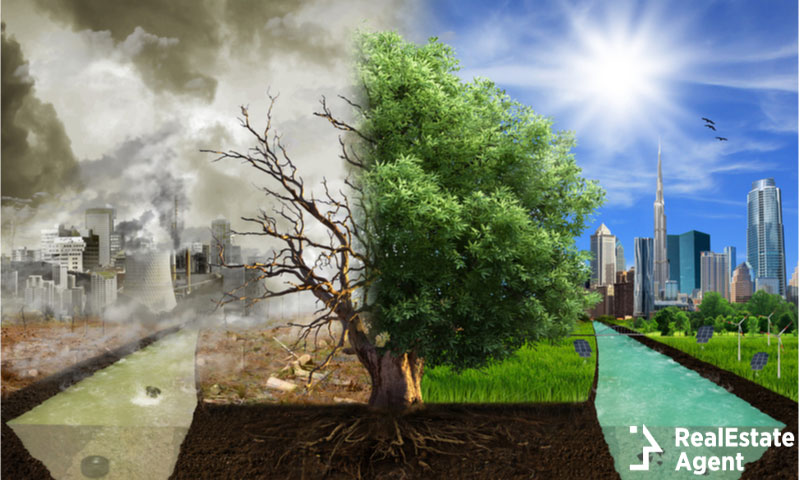









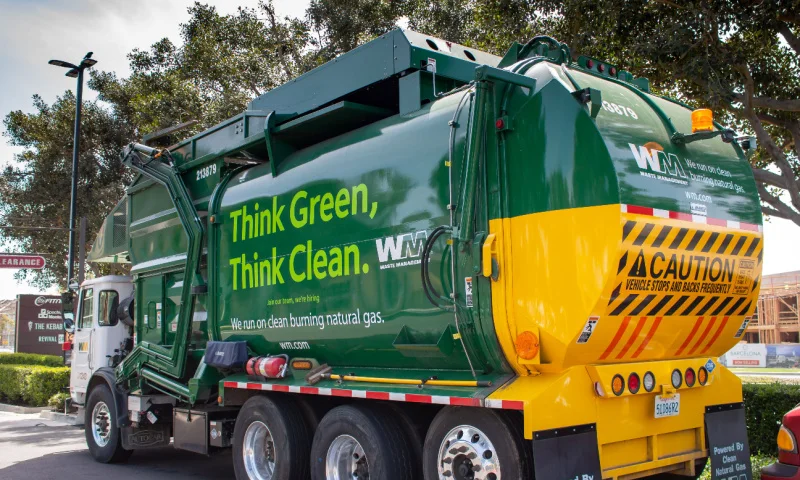

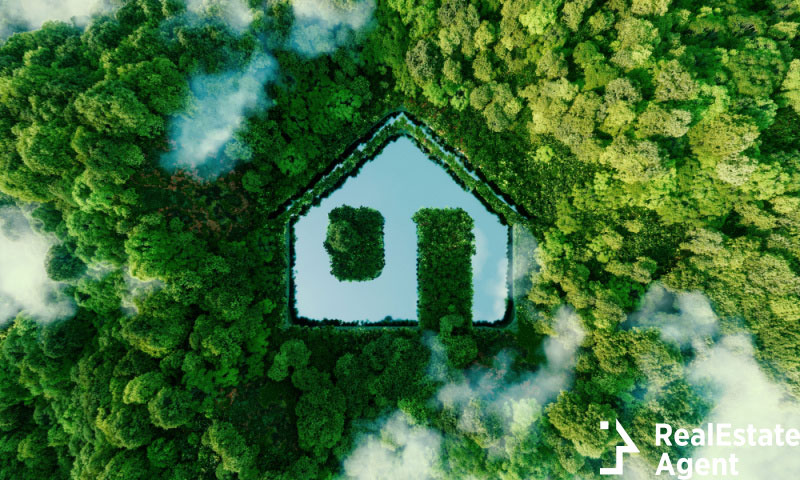
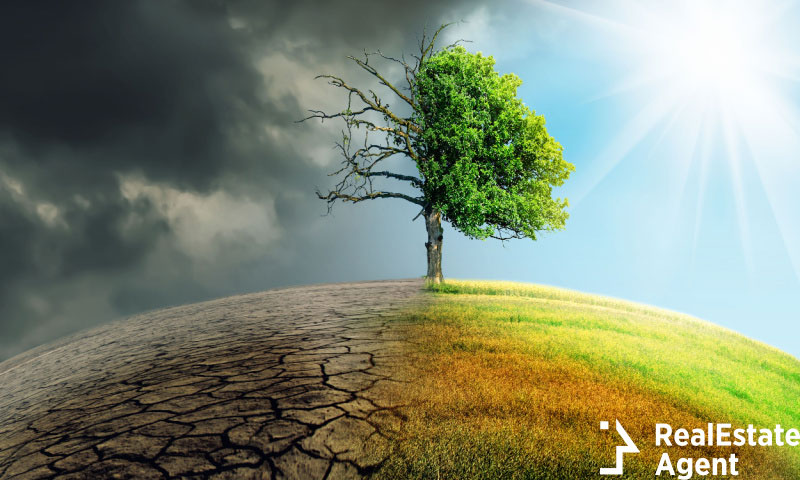
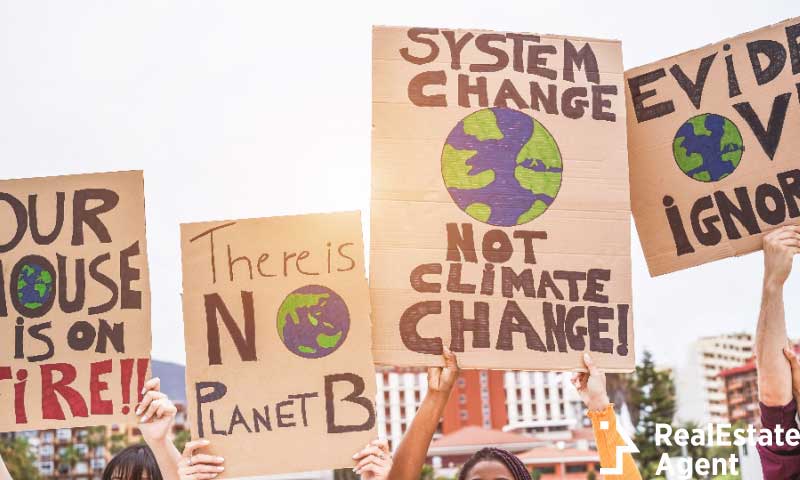


It was awesome article i loved it and is really helpful. Keep it up